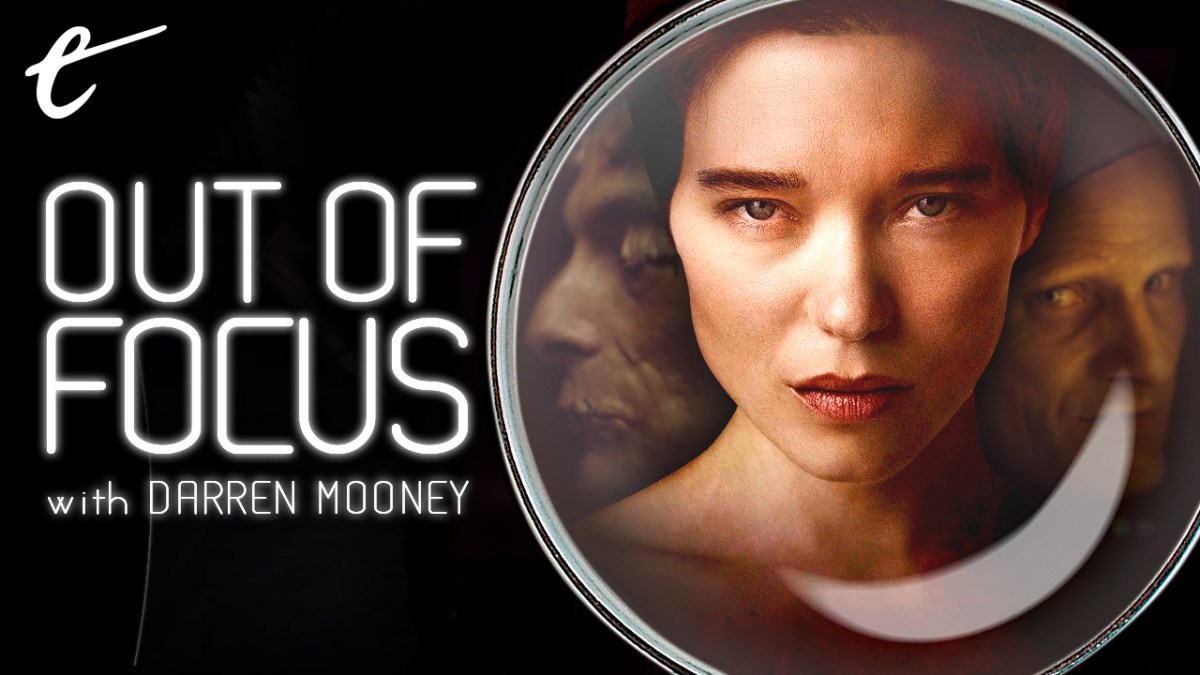Brandon Cronenberg’s Infinity Pool is in cinemas now, so it seemed like a good opportunity to check in with his father, David Cronenberg. David Cronenberg’s most recent film, Crimes of the Future, released on HD Blu-ray just this week.
Early in Crimes of the Future, an artist named Caprice (Léa Seydoux) studies the latest test results from her creative partner, Saul Tenser (Viggo Mortensen). She reports that Saul has begun to gestate a new internal organ. Saul isn’t horrified by this diagnosis. If anything, he’s relieved. “It’s about time,” he confesses. “I thought I was all tapped out. Dried up.” He might be speaking for director and writer David Cronenberg. After all, Crimes of the Future is Cronenberg’s first feature in nine years.
Caprice and Saul are performance artists. In this dystopian future, the human body has begun to change dramatically and randomly. Saul suffers from “Accelerated Evolution Syndrome,” which causes his body to develop new internal organs through a seemingly random process. Caprice tattoos the organs and removes them as part of a public spectacle. In doing this, Saul reveals “his inner creations” to the world. This is a process of artistic creation.
Crimes of the Future is an interesting project for Cronenberg, one full of paradoxes and contradictions. The movie shares a name with Cronenberg’s second feature-length film, but for no greater reason than because Cronenberg “just liked the title.” It is a movie based on a script that Cronenberg wrote in 1998, but the director argued on release that the film was “meant to be super-modern.” It’s a movie that is simultaneously timeless and eerily of its moment.
“The script did not change one word(;) I did one draft and we went in to shoot with that draft,” Cronenberg insisted in an interview with The Los Angeles Times to mark the movie’s release. However, he also conceded, “Viggo likes to provoke me by saying it’s my most autobiographical movie.” Mortensen may be joking with his frequent collaborator, but there may be something to that observation. If nothing else, Saul’s crop of striking white hair recalls the iconic Canadian filmmaker.
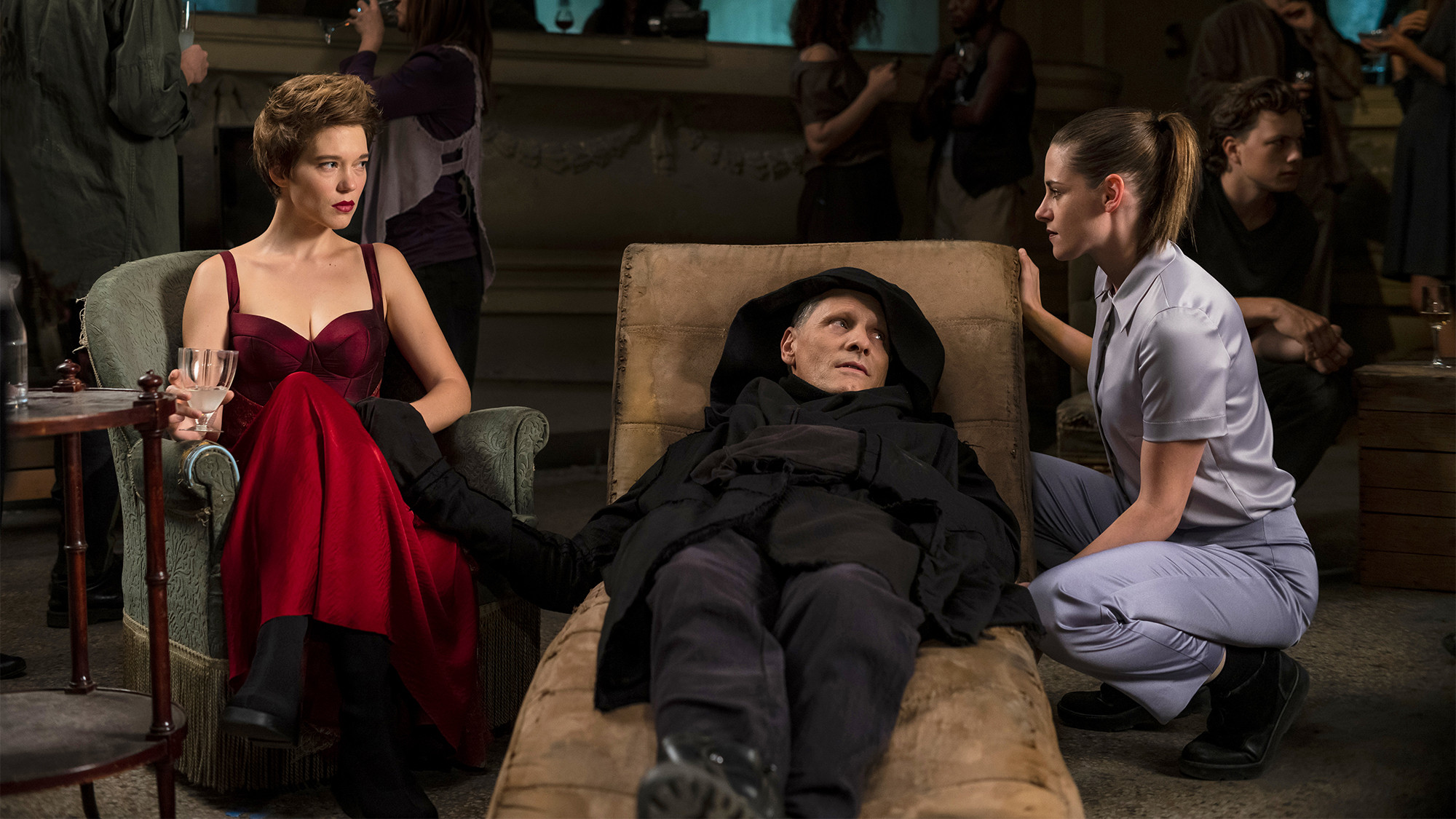
The past few years have seen an interesting trend in movies from established auteurs. Perhaps spurred by the success of Alfonso Cuarón’s Roma, there has been an explosion in high-profile filmmakers building movies around their formative years and the events that shaped them: Kenneth Branagh’s Belfast, James Gray’s Armageddon Time, Joanna Hogg’s The Souvenir, Paolo Sorrentino’s Hand of God, Alejandro González Iñárritu’s Bardo, and Steven Spielberg’s The Fabelmans.
It is maybe too much, and too flippant, to suggest Crimes of the Future offers David Cronenberg’s distinct take on that subgenre. Nevertheless, Crimes of the Future often feels like a veteran filmmaker (and, more broadly, artist) grappling with the big existential question about art. Where does an artist get their ideas? How do these objects manifest themselves? How do they produce these works? Crimes of the Future offers a suitably Cronenbergian answer: They come from within.
Cronenberg has frequently been asked where he gets his ideas. “I think they come into my typewriter,” he joked in an early interview. “It’s a very valuable typewriter. They claw their way out.” Cronenberg is a director with a distinct style and aesthetic. He is one of those rare filmmakers whose name can be transformed into an adjective that is immediately understandable, like “Lynchian,” “Kubrickian,” or “Spielbergian.” Much of that aesthetic is built around the horror of the body.
Cronenberg often discusses his obsession with the primacy of the human body as a rejection of a larger concept outside of it. “I’ve never been religious in the sense that I felt there was a God, that there was an external structure, universal and cosmic, that was imposed on human beings,” he has stated. Explaining where horror comes from, Cronenberg contends, “It comes from within man.” Cronenberg’s body horror can often feel like a literal expression of this central philosophy.
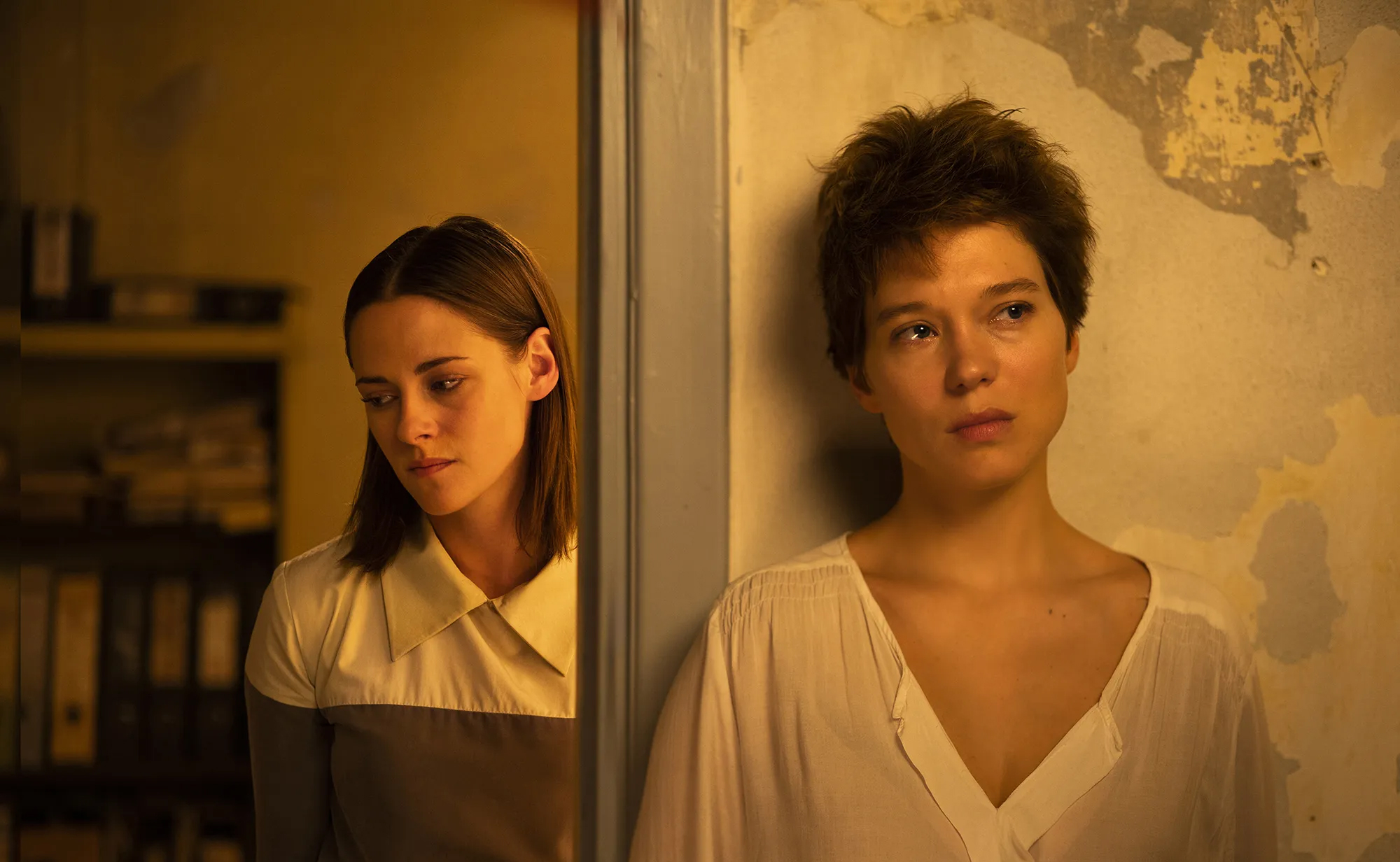
In interviews, Cronenberg often rejects attempts to impose external meaning on his work. “I don’t think about the arc of my films,” he has stated in interviews. “I sometimes have to remind journalists and critics not to confuse their process with mine. That kind of analytical approach is useful for them, but it doesn’t do anything for me as a filmmaker. For me it’s all intuition.” He rejects any attempt to discern an arc in his career, insisting that he just chooses to make a movie “for whatever reason.”
It’s an approach that has echoes within Crimes of the Future. Saul is uncomfortable with Caprice’s tattooing of his organs before they are removed, feeling that it implies an intentionality to his process that isn’t there. “It takes over the form, the shape of the organ itself,” he complains. “It really, in a sense, dominates it, reshapes it. It’s not just parasitic, although I suppose, in a sense, it is that too. It seems to take meaning away from the organ. Takes the process of meaning for itself, so to speak.”
Despite rejecting any attempt to impose an arc on his work, Cronenberg does have an understanding of himself as an artist. He has talked about how, when he described himself as an artist during an interview with fellow horror directors John Carpenter and John Landis, they were horrified at the presumption. In this context, it is perhaps notable that Crimes of the Future is far from the first time that Cronenberg has built a movie around artists. It’s a frequent recurring fixation in his work.
In Scanners, Benjamin Pierce (Robert Silverman) channels his monstrous ability through the creative medium of sculpture. In Videodrome, Max Renn (James Woods) is president of a Toronto television station, and Nicki Brand (Debbie Harry) is a radio host. Naked Lunch is an adaptation of the loosely autobiographical novel written by William S. Burroughs. M. Butterfly depicts a love affair between French diplomat René Gallimard (Jeremy Irons) and opera performer Song Liling (John Lone).
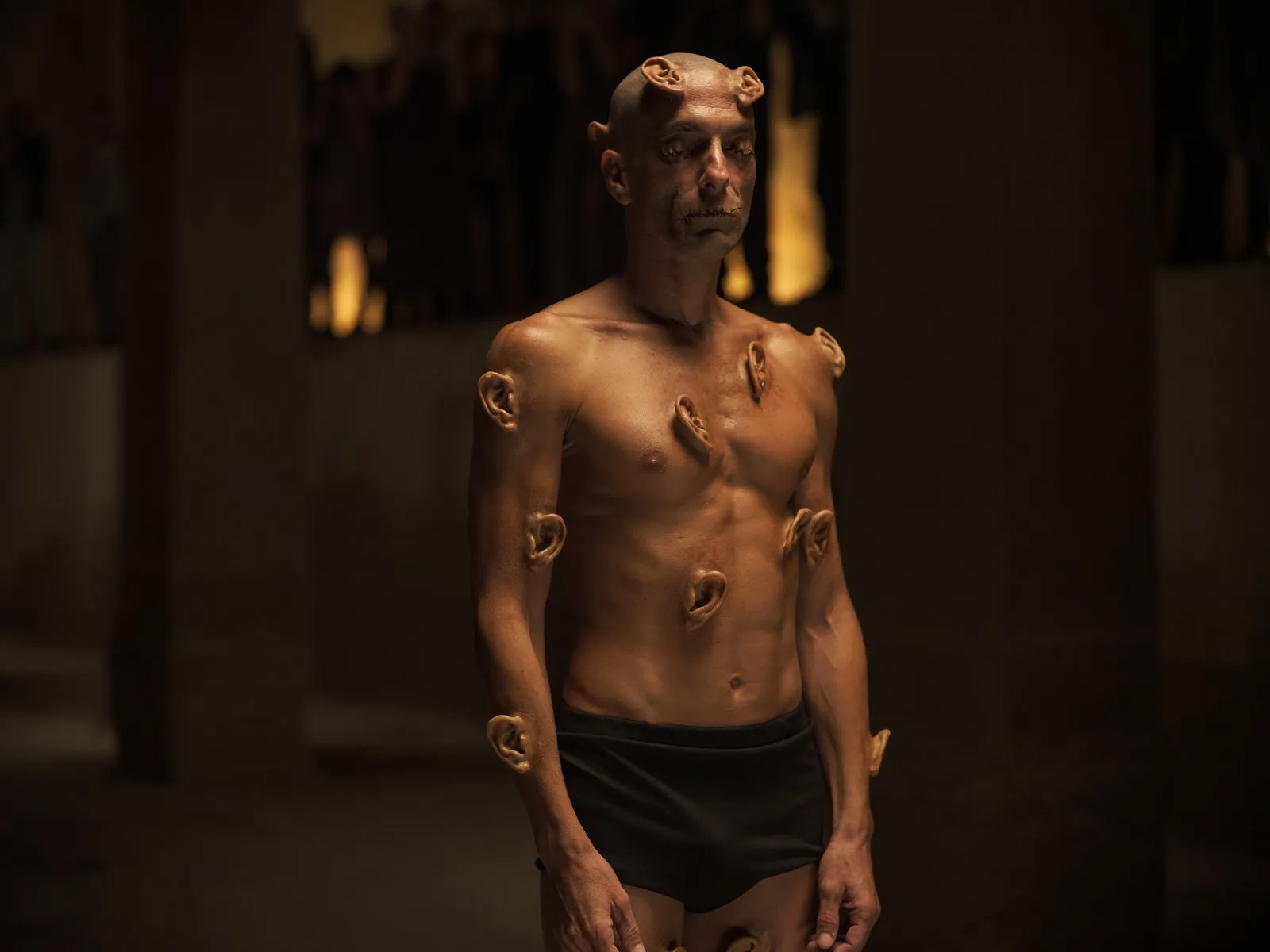
Even in Cronenberg’s movies that aren’t explicitly about creativity, there is often an artistic process of exploration. There’s something grotesquely creative in the medical instruments created by Anders Wolleck (Stephen Lack) for gynecologist Beverly Mantle (Irons) in Dead Ringers, with Cronenberg joking that somebody should make “a wonderful set of jewelry” based on them. In A Dangerous Method, Freud (Mortensen) and Jung (Michael Fassbender) discover psychoanalysis.
In many of these examples, the process of creativity is tied to body horror, internal transformation literalized. It’s also often overtly sexual, reflecting the act of creation, perhaps most literally with Mantle’s tools. In Videodrome, Renn develops a VHS player in his chest, an orifice into which an external object is placed. In Naked Lunch, William Lee (Peter Weller) works on a typewriter that is a living creature, resembling another bug-like monster that he suggestively caresses.
In Crimes of the Future, these reproductive and creative urges also intersect and overlap. Timlin (Kristen Stewart) tells Saul that “surgery is the new sex.” When Saul has a “zipper” installed in his abdomen to make it easier to access his internal organs, Caprice immediately celebrates by putting her mouth to it. It is a literal act of creation. Much of the movie’s plot is spurred by a father (Scott Speedman) who wants to use the dead body of his son (Sozos Sotiris) as an artistic statement.
Cronenberg is open to reading Crimes of the Future as a film about his relationship to his art. “I’m always interested, as any, I suppose, writer, director, filmmaker, in the creative process, and turning your own lens on your own process,” he told Deadline in the lead-up to the film’s release. “It’s an honorable thing. Many, many filmmakers have made films about filmmaking, or about writers, about sculptors. So, this is my very particular version of that because I’ve invented the art form.”
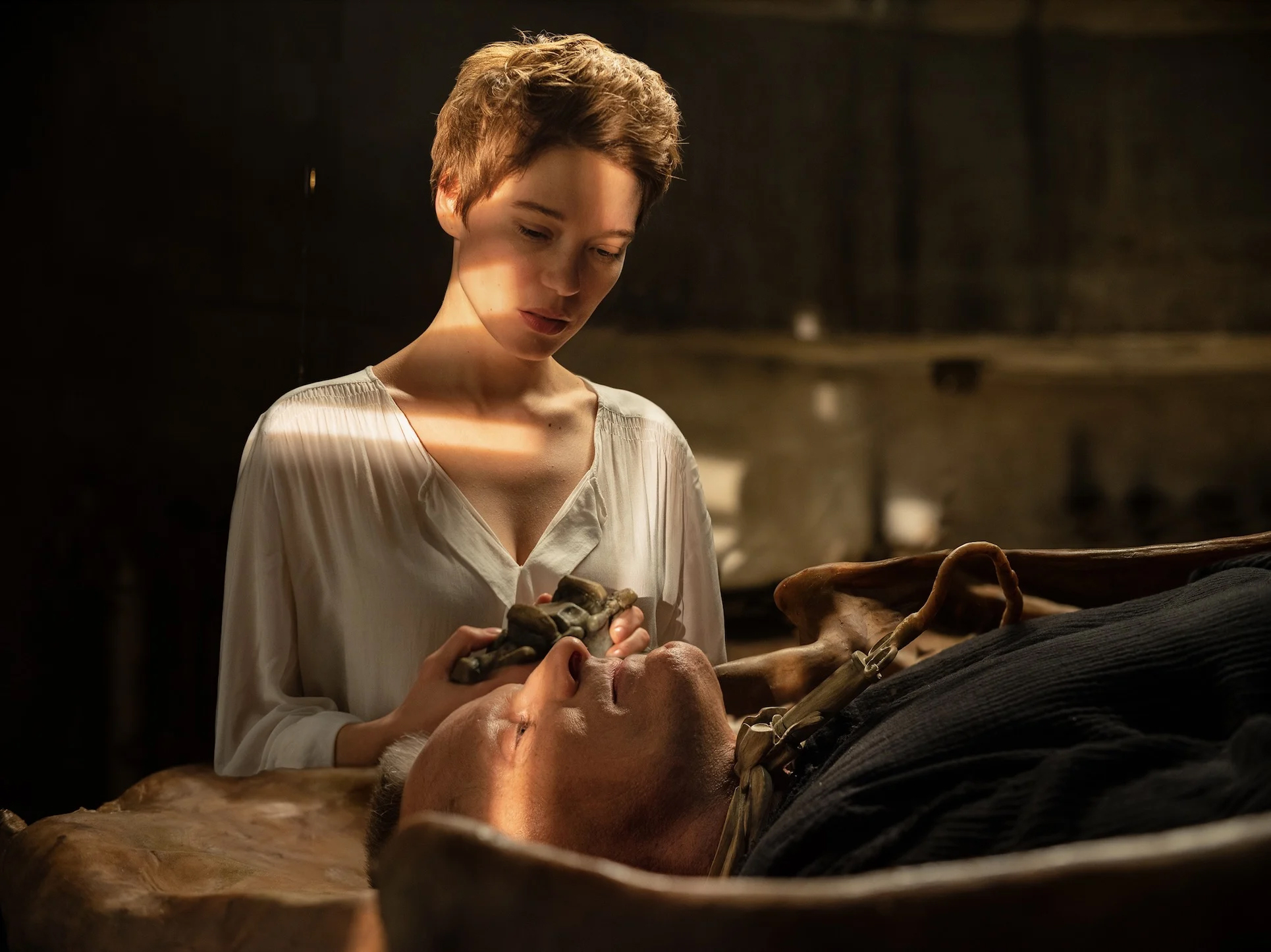
It’s a metaphor for how Cronenberg sees the artistic and creative process. “Saul is offering up his body, and ultimately Caprice is, also,” he told Film Comment. “And I’m saying maybe that’s the analogue of what an artist is. An artist is in some way offering up their essential self, inside out, to the world for some kind of nourishment that is between themselves and their audience.” As such, Crimes of the Future is not a film entirely removed from something like The Fabelmans.
That said, the premise of Crimes of the Future suggests an inevitable separation of art and artist. Saul’s new organs are cut out of him. There’s some suggestion that Cronenberg sees his own projects in that way. “In fact, for me, part of the reason you make a movie is to experience something that intrigues you, perhaps disturbs you, you need to deal with it, experience it somehow but you need it to be at a distance from you,” he has explained.
Cronenberg donated a lot of his archives and props to the Toronto film festival. “Their life, their proper life, is in the movies and it’s not as though I really had them,” he explained of the decision. Saul doesn’t seem to have any similar attachment to his creations outside the process of manifesting them. He donates his cuttings to the National Organ Registry. They are no longer part of him. They grow inside him, they disturb his sleep, they cause him pain; the important thing is to get them out.
There are other interesting parallels if the film is explored through this lens. The National Organ Registry’s fear that such art is “uncontrolled,” “insurrectional,” and “might lead us to a bad place” recalls the early moral panic over Cronenberg’s films to the point of provoking parliamentary debate. However, Saul has become something of a figure of the establishment – perhaps even “sold out” – in the same way that Cronenberg has become an institution in Canadian culture.
All this just scratches the surface of Crimes of the Future and Cronenberg as an artist fascinated by his own creative process. Then again, Cronenberg was certainly never a filmmaker afraid to look inside himself.

